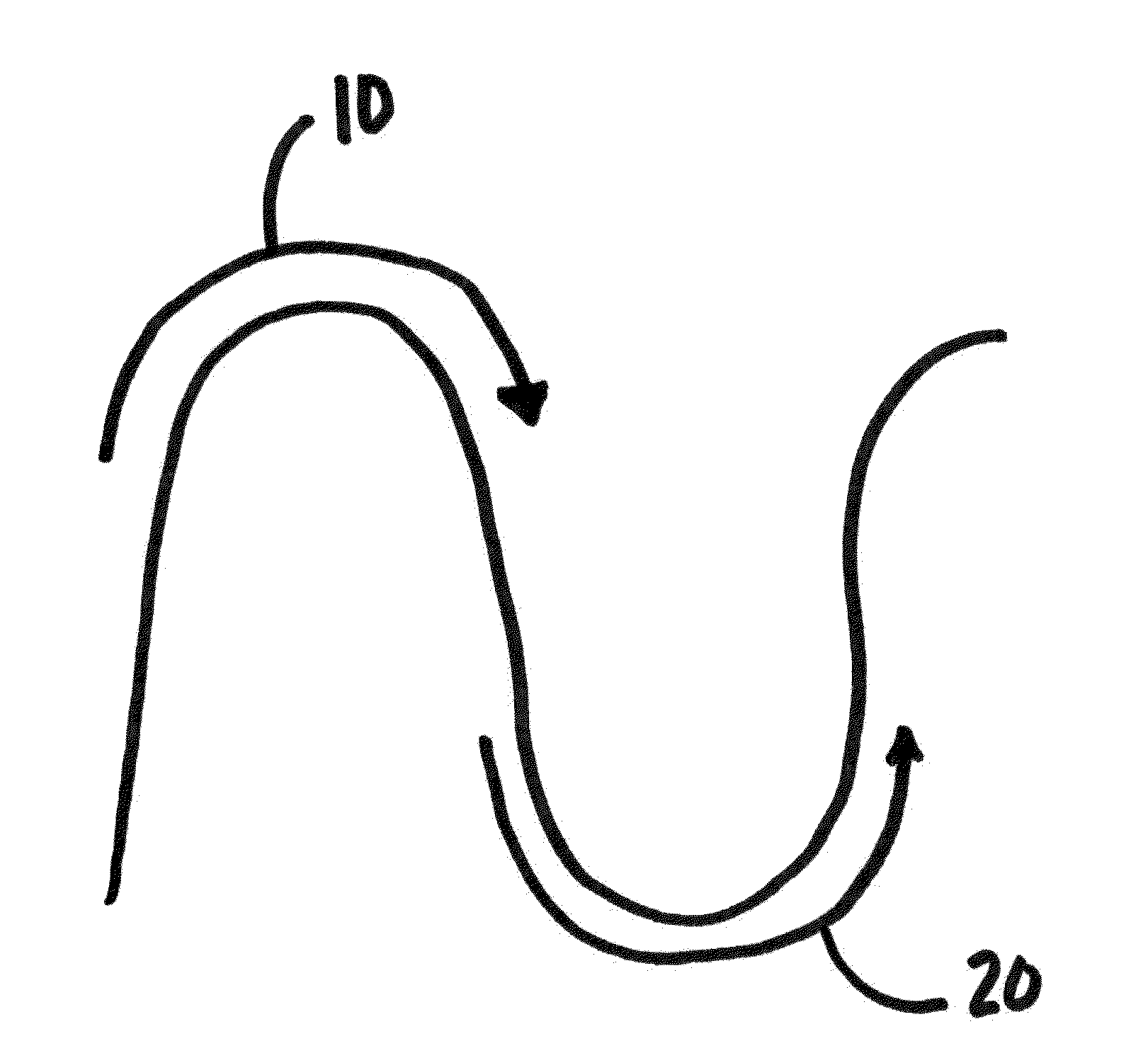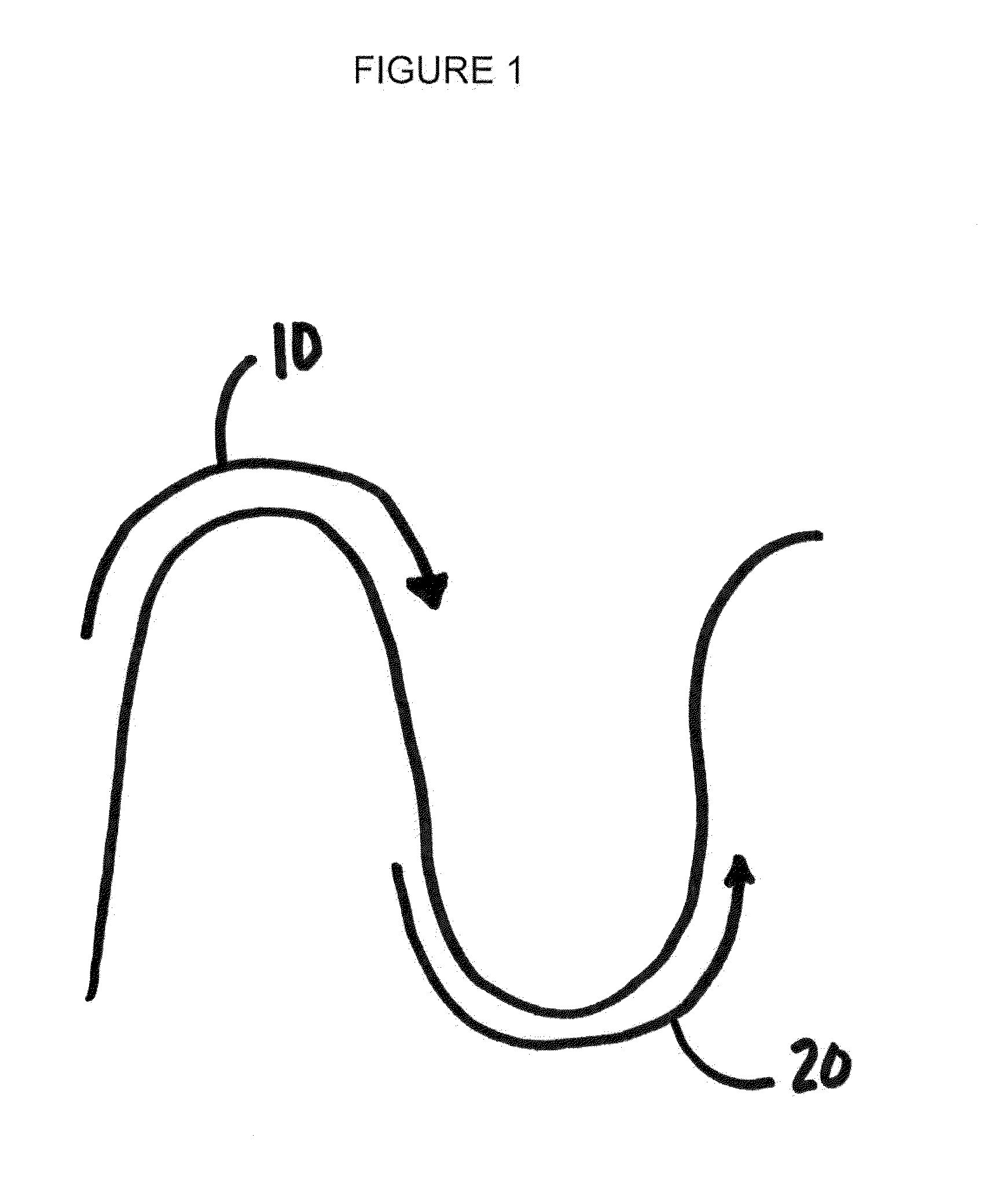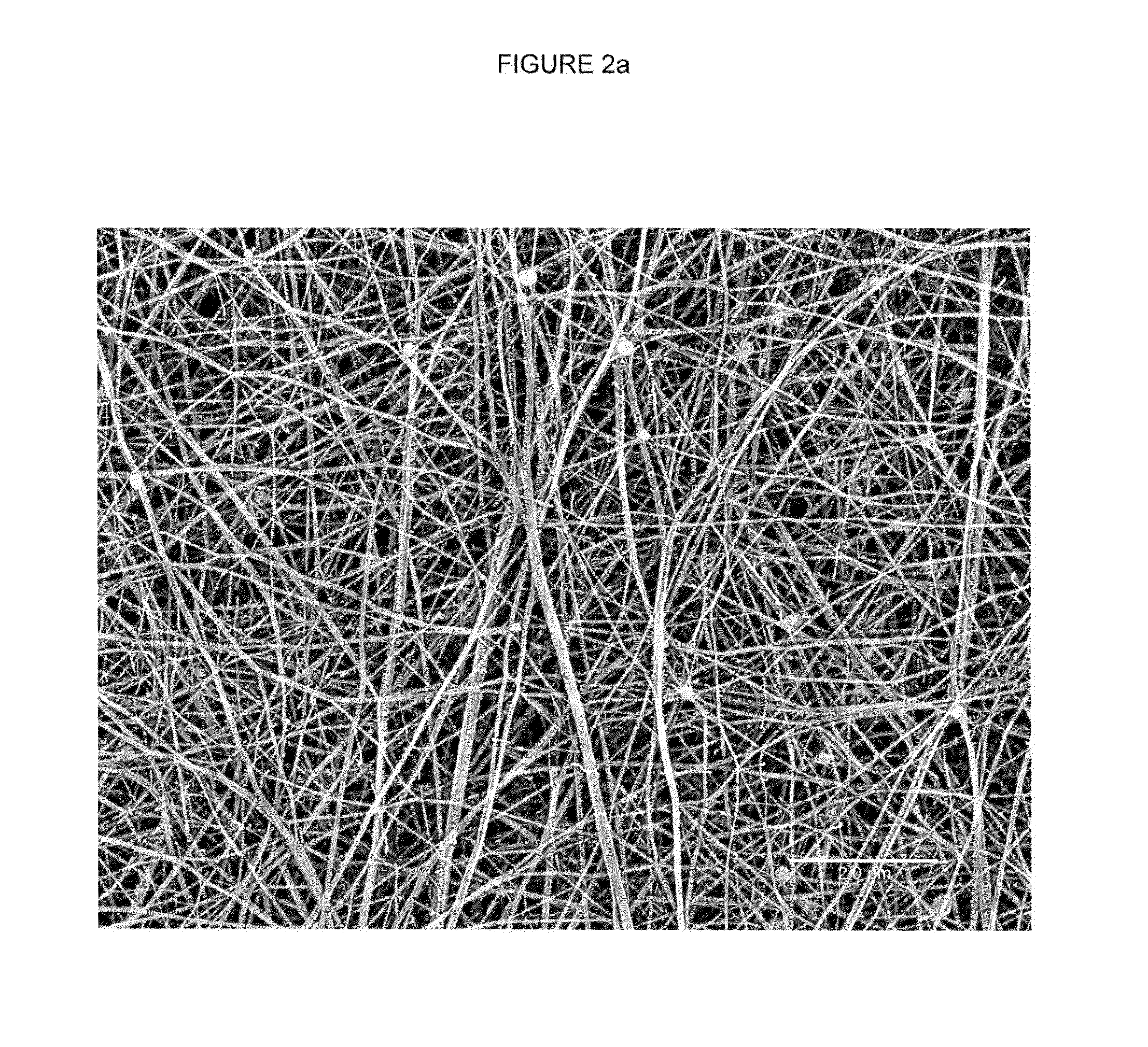Articles including expanded polytetrafluoroethylene membranes with serpentine fibrils
a technology of expanded polytetrafluoroethylene and serpentine fibrils, which is applied in the direction of other domestic articles, synthetic resin layered products, manufacturing tools, etc., can solve the problem of exceptionally weak membranes in this direction, and achieve the effect of high elongation
- Summary
- Abstract
- Description
- Claims
- Application Information
AI Technical Summary
Benefits of technology
Problems solved by technology
Method used
Image
Examples
example 1
Precursor Membrane
[0066]A biaxially expanded PTFE membrane that had not been amorphously locked having the following properties was obtained: thickness=0.0017 mm, density=1.58 g / cc, Gurley=8:8 sec, matrix tensile strength in the strongest direction=346 MPa; matrix tensile strength in the direction orthogonal to the strongest direction=303 MPa, elongation at maximum load in the strongest direction=76.6%, and elongation at maximum load in the direction orthogonal to the strongest direction=98.6%. As used herein, the phrase “strongest direction” refers to the strongest direction of the precursor membrane. The fibrils of the membrane were substantially straight and the membrane contained substantially only fibrils, as shown in FIG. 2a, a scanning electron micrograph (SEM) of the surface of the membrane taken at 10,000× magnification. The precursor membrane and the initial, expanded fluoropolymer membrane may be used interchangeably herein.
Retracted Membrane
[0067]The precursor membrane w...
example 2
Precursor Membrane
[0069]A biaxially expanded PTFE membrane that had not been amorphously locked having the following properties was obtained: thickness=0.00051 mm, density=2.00 g / cc, Gurley=3.1 sec, matrix tensile strength in the strongest direction=500 MPa. The matrix tensile strength in the direction orthogonal to the strongest direction=324 MPa, elongation at maximum load in the strongest direction=68.3%, and elongation at maximum load in the direction orthogonal to the strongest direction=87.7%. The fibrils of the membrane were substantially straight as shown in FIG. 3a, a SEM of the surface of the membrane taken at 10,000× magnification.
example 2a
Retracted Membrane
[0070]A roll of precursor membrane, wherein the length direction corresponded with the strongest direction of the membrane, was restrained in the clamps of a heated, uniaxial tenter frame and fed into the heated chamber of the tenter frame. The oven temperature was set to about 280° C. The rails of the tenter frame within the heated chamber were angled inward in order to allow membrane shrinkage to about 54% of its original width in response to the heat. The line speed was set to provide a dwell time of about two minutes within the heated chamber.
[0071]The initial and final widths of the membrane were 1572 mm and 848 mm, respectively. The retracted membrane had the following properties: thickness=0.00152 mm, density=1.1 g / cc, Gurley=2.8 sec, matrix tensile strength in the strongest direction=517 MPa, matrix tensile strength in the direction orthogonal to the strongest direction=160 MPa, elongation at maximum load in strongest direction=63%, and elongation at maximu...
PUM
| Property | Measurement | Unit |
|---|---|---|
| Fraction | aaaaa | aaaaa |
| Fraction | aaaaa | aaaaa |
| Fraction | aaaaa | aaaaa |
Abstract
Description
Claims
Application Information
 Login to View More
Login to View More - R&D
- Intellectual Property
- Life Sciences
- Materials
- Tech Scout
- Unparalleled Data Quality
- Higher Quality Content
- 60% Fewer Hallucinations
Browse by: Latest US Patents, China's latest patents, Technical Efficacy Thesaurus, Application Domain, Technology Topic, Popular Technical Reports.
© 2025 PatSnap. All rights reserved.Legal|Privacy policy|Modern Slavery Act Transparency Statement|Sitemap|About US| Contact US: help@patsnap.com



